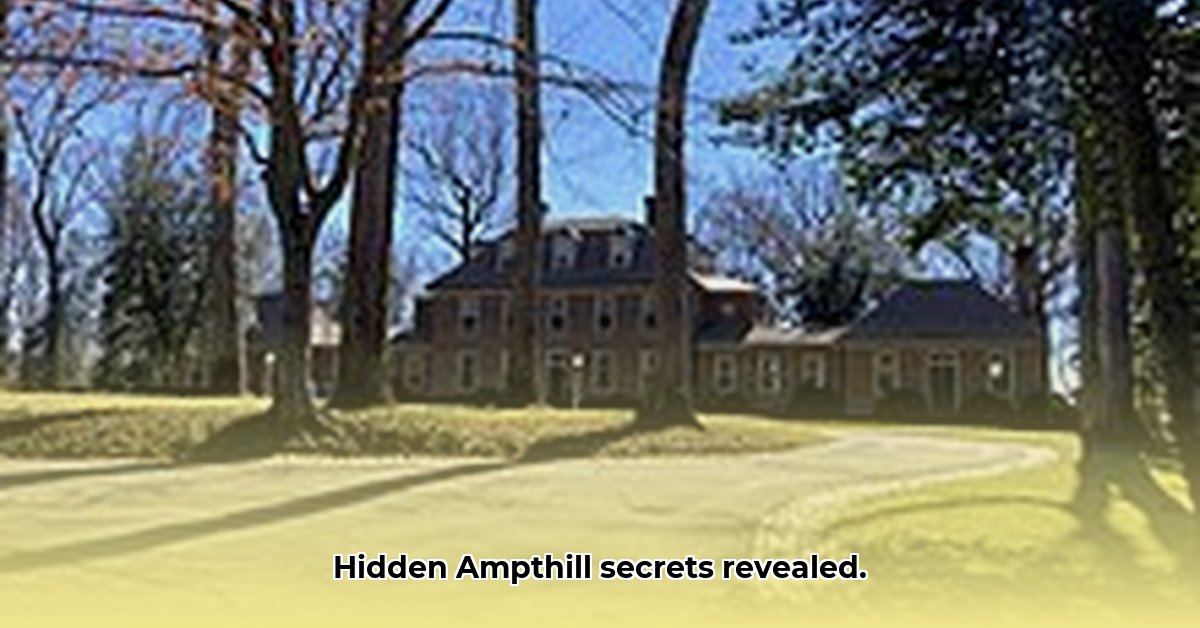
Ampthill Chesterfield County Virginia: Unraveling the Secrets of Two Great Estates
Nestled amidst the rolling hills of Chesterfield County, Virginia, lie two magnificent plantations, both named Ampthill. Their intertwined histories form a captivating narrative of powerful families, shifting fortunes, and the enduring legacy of colonial Virginia. This isn't merely a tale of land and lineage; it's a story of strategic alliances, fierce ambition, and the intricate legal maneuvering that defined the era.
The first Ampthill, built before 1732 by the prominent Henry Cary, stands as a testament to this bygone era. While much of its story is preserved in historical records, its significance remains undeniable, serving as our starting point in exploring the lives of Virginia's elite families. However, the second Ampthill offers an even more intriguing narrative, a saga of inheritance and shifting fortunes reflecting the complex social dynamics of colonial society.
This second Ampthill's story begins with Charles Fleming, whose ownership ultimately transferred to his son-in-law, Thomas Randolph. The estate then passed to the immensely influential Robert "King" Carter, a name synonymous with wealth and power in the colony, before finally landing in the possession of Carter Henry Harrison and his descendants. These transfers weren't simple transactions; they were strategic maneuvers reflecting the intricate interplay of power, wealth, and the legal complexities surrounding women's property rights in the 18th century. Consider it a high-stakes game of real estate with lasting implications. How did these transactions shape the social landscape of the time? The answer lies in understanding the intricate family connections that underpinned these transfers.
Exploring the family trees reveals compelling connections between the Cary, Randolph, Carter, and Harrison families. Marriages served as powerful alliances, forging intricate family networks that spanned generations. These unions solidified land ownership, expanded political influence, and created an exceptionally wealthy and interconnected circle. Marriage, in this context, wasn't simply a personal decision; it was a strategic move impacting the course of history. Did these strategic unions ultimately benefit society as a whole?
These families played a significant role beyond mere land ownership. Their active participation in shaping Virginia's destiny, including their involvement in the American Revolution, is well documented. However, a complete understanding of Ampthill's story requires acknowledging the enslaved people whose labor was integral to the plantations' prosperity. Their stories, largely absent from official records, are nevertheless intricately interwoven with the very existence of Ampthill. Their contributions are essential to understanding the complete and unvarnished truth. What can we learn from examining the lives of those whose contributions were often unrecognized?
While much of Ampthill's history has been painstakingly pieced together, some aspects remain shrouded in mystery. For example, the exact date the second Ampthill received its name remains elusive to historians. Documents suggest a naming sometime in the 1800s, but the precise year remains undetermined. This ongoing research highlights the collaborative effort required to illuminate the complexities of the past – new discoveries continually refine our understanding.
The intertwined destinies of these families and their plantations offer a profound insight into colonial Virginia, revealing both its immense wealth and the pervasive social inequalities. It's a reminder of the complex and often contradictory legacy we inherit. The story of Ampthill embodies both the triumphs and the tragedies, the power and the vulnerability of this pivotal period in American history. How does this duality shape our understanding of the past?
How did women navigate property ownership laws in Colonial Virginia's elite families?
Ampthill's story often focuses on prominent men, but the women of the Cary, Randolph, Carter, and Harrison families played crucial roles, navigating the complex legal landscape of property ownership. How did these women, constrained by legal realities, maneuver the intricacies of land ownership? Their stories, though sometimes hidden, reveal remarkable resilience and ingenuity.
The Legal Labyrinth: Feme Covert and Feme Sole
Colonial law largely defined married women as feme covert (legally subservient to their husbands), their legal identity merging with their husband's, preventing independent property ownership. However, feme sole—unmarried women, widows, or legally separated women—enjoyed greater autonomy. This legal distinction profoundly affected how women engaged with land ownership. How did this legal disparity affect women's agency in shaping their own destinies?
Women employed various strategies, particularly widows inheriting estates. They utilized legal loopholes and familial alliances, often employing trusted male relatives (brothers, sons) as intermediaries to manage estates on their behalf while retaining ultimate authority. Trusts and settlements also proved vital, protecting inheritances and navigating the limitations of feme covert status.
Family Networks and Power Dynamics
Intricate family connections significantly influenced women's ability to maneuver property laws. Marriages were strategic alliances, consolidating landholdings and power. Dowries, provided by a woman's family, sometimes included land or assets, becoming a point of negotiation within the marriage. Did the size of a dowry affect a woman's power within her marriage? This demands further investigation.
Women exerted influence beyond direct property ownership. Managing household accounts and agricultural operations demanded financial acuity and administrative skills. Even if legal ownership resided with the husband, a woman's economic contributions significantly impacted the family's wealth. Can we consider this an indirect form of control?
Beyond the Elite
The experiences of elite women were linked to the broader social and economic realities of colonial Virginia. The lives of enslaved women and those of lesser social standing faced vastly different challenges and their contributions, often undocumented, require examination. How can a comprehensive understanding of Ampthill's history incorporate the experiences of all women, not just the elite?
Key Takeaways:
- Colonial Virginia law significantly disadvantaged married women in property ownership.
- Legal loopholes and familial alliances provided opportunities for some women to maintain control.
- Family connections were crucial in navigating property laws.
- Women played significant roles in managing family wealth, even without direct legal ownership.